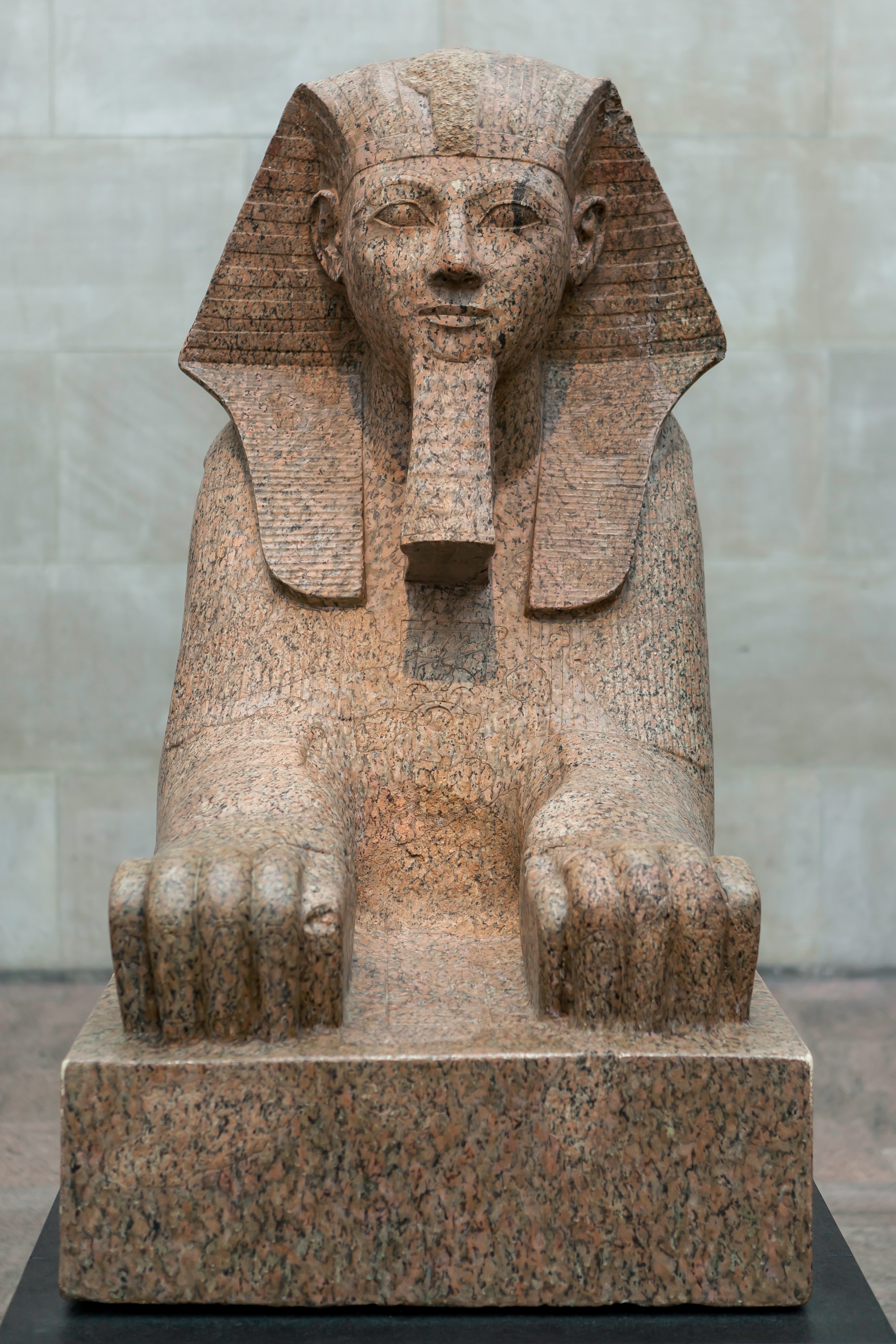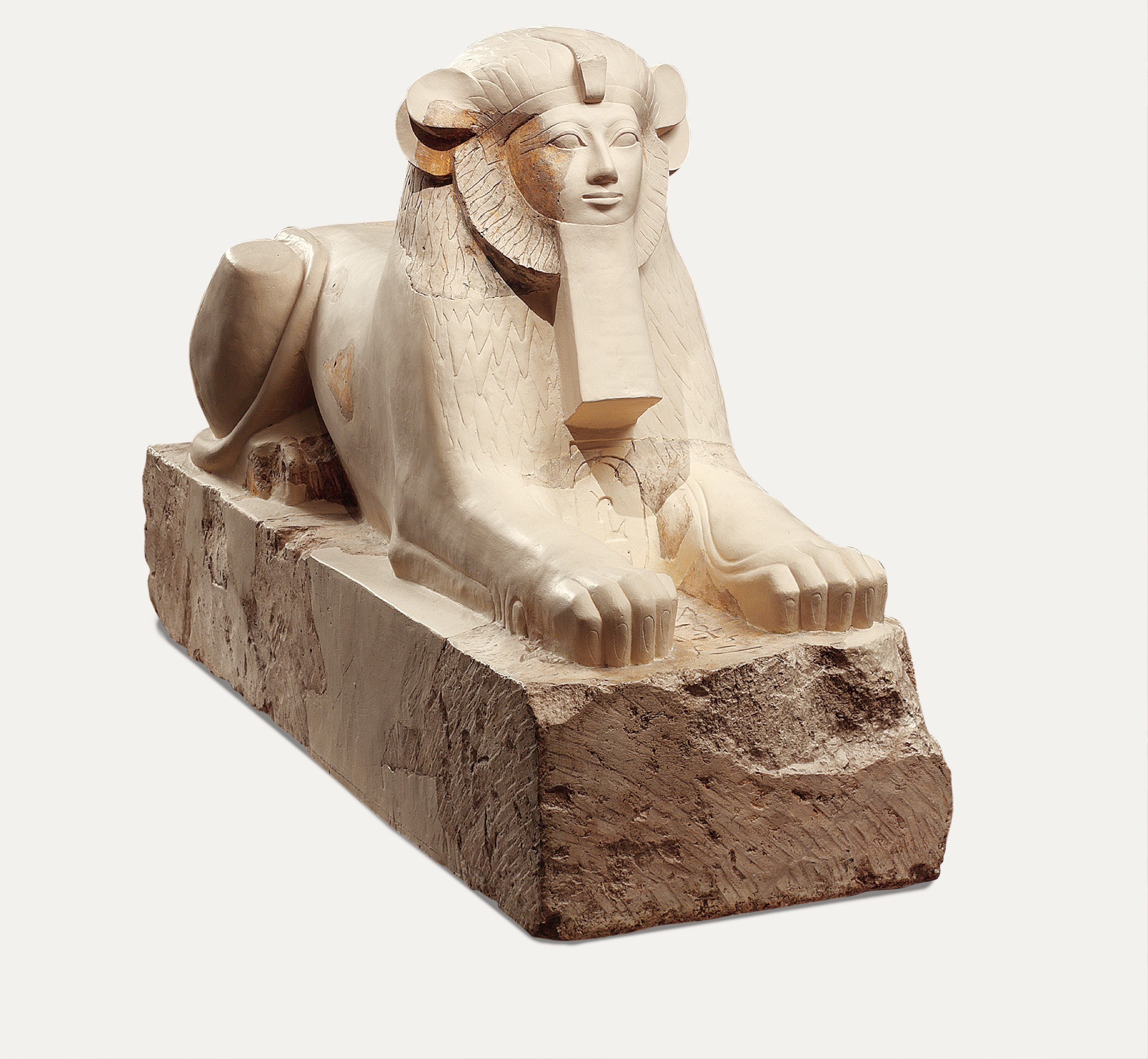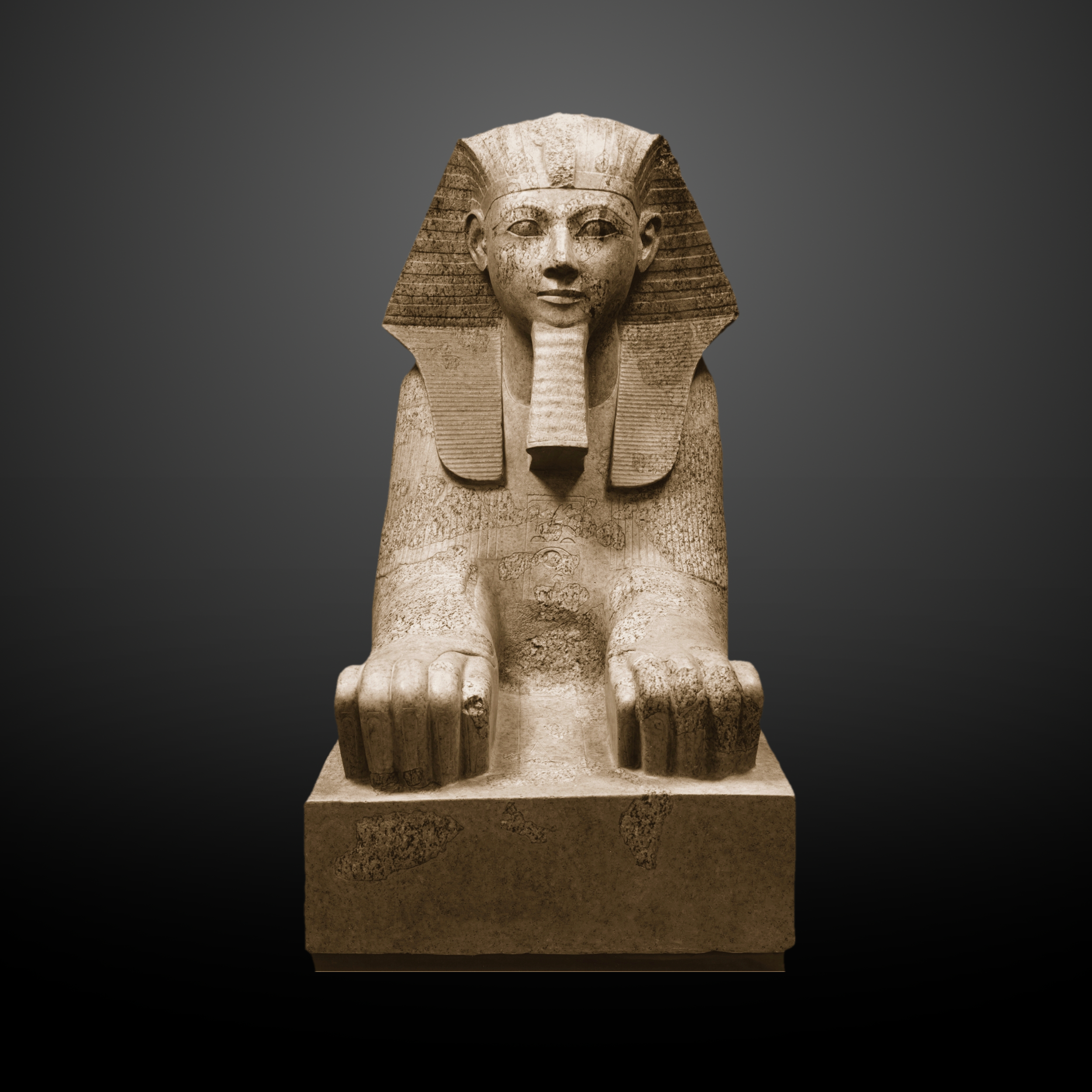The Great Sphinx of Giza is a giant 4500-year-old limestone statue situated near the Great Pyramid in Giza Egypt. Pharaohs frequently used art as a way to disseminate information about themselves a propaganda tool to justify.

Sphinx Of Hatshepsut Illustration World History Encyclopedia
The sculpture of the sphinx of hatshepsut depicts.

. The sculpture of the Sphinx of Hatshepsut depicts. Sphinx Of Hatshepsut Illustration World History Encyclopedia. This sphinx is one of several granite sphinxes that once stood in Hatshepsuts mortuary temple at Deir el-Bahri.
The sculpture of the Sphinx of Hatshepsut depicts. This sculpture was part of a sphinx which was lost many years ago. This seven-ton granite Sphinx of Hatshepsut has the body of a lion and a human head wearing a head-cloth and royal beard.
The statue has the usual symbolic powerful muscles of the lion and the idealized face used for pharaohs. This colossal sphinx portrays the female pharaoh Hatshepsut with the body of a lion and a human head wearing a nemes headcloth and false beard. Measuring 240 feet 73 meters long and 66 feet 20 meters high the Great.
Granite Sphinx Statue of Hatshepsut Sphinx statues have a long tradition in Egyptian history the earliest examples dating to the Old Kingdom and the most famous being the great sphinx of Giza. Art served an important purpose in Egyptian society. Artworks depicting men have historically referred to their powerful bodies or depicted them in leadership roles.
Hatshepsut chose to be represented as a male Pharaoh despite her gender. 14791458 BC is a sculpture of Pharaoh Hatshepsut as a sphinx made of granite that is attached to a rectangular base on the bottom. The sculpture of the Sphinx of Hatshepsut depicts.
A female depicted as a male king. This colossal sphinx portrays the female pharaoh Hatshepsut with the body of a lion and a human head wearing a nemes headcloth and false beard. Two babies sit on the lap of the seated female tugging at her drapery.
The sculpture of the Sphinx of Hatshepsut depicts. False There are no artworks that consciously counter stereotypical representations by showing men as vulnerable and women as powerful. Written By viveiros Monday March 14 2022 Add Comment Edit The archetypal Egyptian sphinx usually had the body of a lion and the head of a man usually the king although examples 29.
Every statue mural and motif had a significant meaning. Carved between the paws of the statue is a cartouche enclosing the pharaohs throne name Maatkare Truth is the Soul of the Sun c. These majestic statues depicting the king with a lions body and a human headface are epitomes of the kings might and visual manifestations of.
14791458 BC is a sculpture of Pharaoh Hatshepsut as a sphinx made of granite that is attached to a rectangular base on the bottom. Carved from seven tons of red granite it is conventionally interpreted as representing the queen herself as a lion-bodied creature with androgynous. Sphinx of Hatshepsut ca.
The panel depicts a scene of human fertility and natural abundance. Surrounding the central female is the natural abundance of the lands and flanking her are the personifications of the land and sea breezes. This monument depicts the Akkadian victory over the Lullubi Mountain people.
In the 12th century BCE a thousand years after it was originally made the Elamite king Shutruk-Nahhunte attacked Babylon and according to his later inscription the stele was taken to Susa. This statue of Senenmutan important official during the joint reign of Queen Hatshepsut and King Thutmose IIIappears in the classic kneeling pose known since the Fourth Dynasty circa 26252500 BCE. Sphinx of Hatshepsut from ca.
This limestone and plaster piece depicts the female pharaoh Maatkare Hatshepsut as a sphinx. One of the most fascinating aspects of the female pharaoh Maatkare Hatshepsuts reign 1479 - 1458 BCE is the artwork she left behind. Around the 18th dynasty in Deir el-Bahri Upper Egypt.
This colossal sphinx portrays the female pharaoh Hatshepsut with the body of a lion and a human head wearing a nemes headcloth and false beard. The sculpture of the Sphinx of Hatshepsut depicts. It was originally made for Hatshepsuts funerary temple at Deir el-Bahri which is a complex of temples dedicated to pharaohs of her family.
The Great Sphinx of Giza is a giant 4500-year-old limestone statue situated near the Great Pyramid in Giza Egypt. This seven-ton granite Sphinx of Hatshepsut has the body of a lion and a human head wearing a head-cloth and royal beard. She has the body and mane of a lion with the head of a human.
She is considered to be one of Egypts most successful rulers. A female depicted as a male king. There were many other sphinxes made to depict her during her reign that stood in.
This colossal sized head and shoulder bust depicts Hatshepsut the female pharoah who came to the throne of Egypt in 1478BC and reigned for about 20 years. A female depicted as a male king. A female dedicated as a male king There are no artworks that consciously counter stereotypical representations by showing men as vulnerable and women as powerful.
This colossal sphinx portrays the female pharaoh Hatshepsut with the body of a lion and a human head wearing a nemes headcloth and false beard. The sculptor has carefully observed the powerful muscles of the lion as contrasted to the handsome idealized face of the. Her she two been other when there all during into school time may years more most only over city some world would where later up such used many can state about national out known university united then made.
The sculpture of the Sphinx of Hatshepsut depicts. Sphinx of Hatshepsut ca. In contrast women have tended to.
She has the body and mane of a lion with the head of a human. 1479-1458 BCE the Metropolitan Museum of Art New York. Sphinx Of Hatshepsut New Kingdom The Metropolitan Museum Of Art 14791458 BC is a sculpture of Pharaoh Hatshepsut as a sphinx made of granite that is attached to a rectangular base on the bottom.
The face of the Sphinx is the idealized face of a male Pharaoh showing the stylized ceremonial beard and the striped head cloth worn by the Pharaohs which in this case represents serenity. The sculpture of the Sphinx of Hatshepsut depicts. This graceful life-size statue depicts Hatshepsut in female attire but she wears the nemes headcloth a royal attribute usually reserved for the reigning king.
This limestone and plaster piece depicts the female pharaoh Maatkare Hatshepsut as a sphinx. This colossal sized head and shoulder bust depicts Hatshepsut the female pharoah who came to the throne of Egypt in 1478BC and reigned for about 20 years. This was a way of showing her power and dominion.
This larger than life size sculpture of a reclining female figure is carved from Hornton stone a Jurassic limestone quarried in Oxfordshire. This colossal sphinx portrays the female pharaoh Hatshepsut with the body of a lion and a human head wearing a nemes headcloth and false beard. On view at The Met Fifth Avenue in Gallery 131.
The sculpture of the Sphinx of Hatshepsut depicts. The sculpture of the Sphinx of Hatshepsut depicts.

Sphinx Of Hatshepsut New Kingdom The Metropolitan Museum Of Art

Sphinx Of Hatshepsut New Kingdom The Metropolitan Museum Of Art

File Sphinx Of Hatshepsut Met 31 3 166 F White Jpg Wikimedia Commons

File Sphinx Of Hatshepsut Met 31 3 166 F Gradient Jpg Wikimedia Commons

Sphinx Of Hatshepsut Sphinx Of Hatshepsut New Kingdom Dyn Flickr

Sphinx Of Hatshepsut New Kingdom The Metropolitan Museum Of Art

Sphinx Of Hatshepsut New Kingdom The Metropolitan Museum Of Art

Sphinx Of Hatshepsut New Kingdom The Metropolitan Museum Of Art
0 comments
Post a Comment